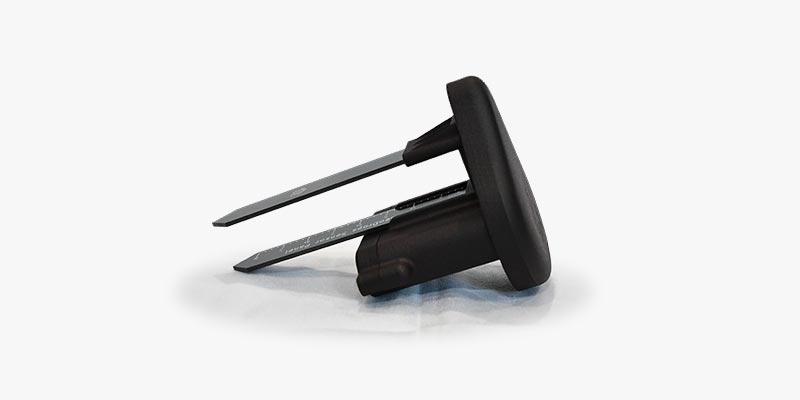AI-powered GeoDrops Automates Lawn Irrigation with Prototyping from Protolabs’ Cool Idea Award
Homedigy’s GeoDrops irrigation system is leveling up the Smart Home industry, taking the guess work out of when and how often to water your lawn or garden. Our latest Cool Idea Award winner, Homedigy used the award manufacturing grant to quickly iterate on the GeoDrops sensor design in the prototyping phase. We chatted with founder Lawrence Ying to get the lowdown on this helpful outdoor watering system, how the design evolved, and the plan for launching it to market for eager patrons.

Making Smart Devices Smarter
An ex-Googler, Ying has always been passionate about one day creating a Smart Home invention of his own. His fellow tech savvy friends shared the same interest so they joined forces and got to work researching and brainstorming.
“Most Smart Home devices out there—connected devices that link up to the Internet—allow for remote control, but they’re not that smart. They’re pretty primitive and don’t understand things like evaporation rates and soil compositions. There’s a huge gap between what’s available on the market and what modern technology can actually do,” said Ying.
The Homedigy team noticed the market was already semi-saturated with Smart Home devices like lights and cameras, but very little existed for outdoor use. “We figured, our cell phones, laptops, and data centers are capable of doing so much. Let’s bring some of those technologies into the outdoor aspect of peoples’ homes,” he said. Enter GeoDrops.
A Sustainable Watering System
Not only does GeoDrops have impressive built-in techy intelligence, but it’s also intended to aid the environment. “We’re going through climate change and water is a very precious resource. We’ve found in our alpha stage testing of this product, that most people tend to overwater. People are effectively just guessing when and how often to water,” said Ying.
The device connects to Wi-Fi, allowing it to account for local weather. According to Ying, the GeoDrops sensor blades are able to understand the full soil gradient on a miniscule level, comprehending the water movement rate. “It understands the entire transpiration rate that the soil observes through the plant roots and the evaporation from the sun.”
GeoDrops’ sensors are AI capable and can measure, observe, and adapt over time to determine the ideal irritation and water interval for lawns and gardens. “Not only do you end up likely saving water, but you’ll have a more beautiful and lush garden,” he said.
Partnering with Protolabs for Prototyping
The Homedigy team worked with Protolabs during the engineering validation testing (EVT) phase of the GeoDrops sensor, working through eight different design iterations.
Material selection was also a key factor in the iterative phase. Finding an option that was UV-resistant and capable of withstanding harsh and diverse environmental conditions was top of mind for Ying.
“Originally, we were looking for a purely stainless-steel design. One issue is that it can get extremely hot from the sun and will kill the nearby plants. Besides material properties though—and this is where having prototypes from Protolabs really helped—is environmental seal. Environmental seal with these types of prototypes is difficult to work on,” Ying said.

An effective environmental seal is necessary to handle the extreme temperature swings of the outdoors. While a cell phone accommodates temperature changes of 20-30 degrees Fahrenheit when leaving the house, GeoDrops will encounter fluctuations north of 100 degrees between winter nights and hot summer days. Ying and the team primarily utilized Multi Jet Fusion to quick-turn 3D print a series of functional prototypes to perfect a design that protects vital parts, including its O-ring water seal.
“Having rapid prototyping capability allowing us to iterate on the O-ring design and do miniscule changes is incredibly useful,” he explained. Ying settled on a UV-resistant polymer for GeoDrops’ final material.
What’s next for GeoDrops? It’s launching on Kickstarter this spring with hopeful enthusiastic support. “We believe it can make a difference by helping people’s gardens and helping the planet. We’re ready to make it a reality and bring it to life,” said Ying. Check out GeoDrops for yourself!






